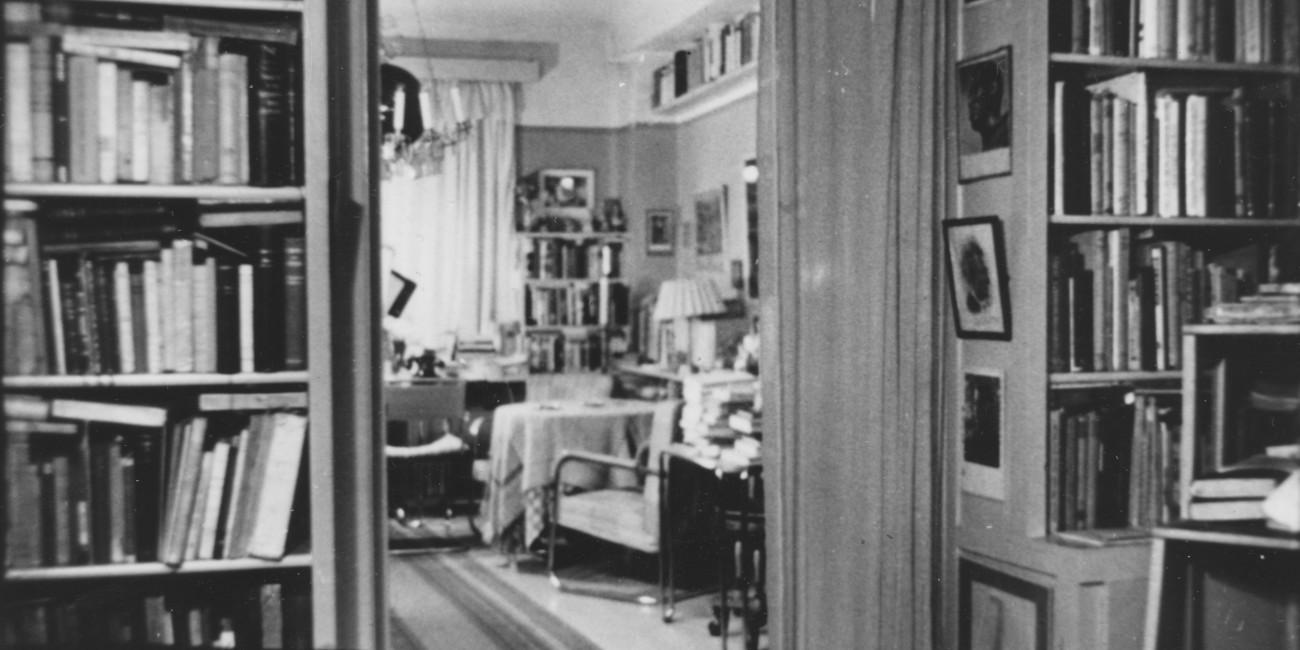Eisenstein Centre (Moscow, Russia)
Eisenstein Centre (Moscow, Russia)
Already in his lifetime, Sergei Eisenstein – filmmaker, theorist of art, draughtsman, teacher, essayist and public figure – was named a “Leonardo da Vinci of cinema”. His friends and pupils called his apartment “the Master’s House”: the interior of this house was more than a ‘portrait of its owner’. Offering a brilliant collection of authentic objects and images, it became an “objectal manifest” of the artist and thinker who was completely sure that the very multiform world culture is in fact an entity, and that the new-born cinema is genetically bound with all other art forms. A multitude of books in five languages, with marginalia and bookmarks; prints of Piranesi and Callot, Utamaro and Sharaku, a painting by Fernand Leger and the comics by Walt Disney; masks from Mexico, Africa and the island of Bali together with make-up examples of the Peking Opera and posters from Kabuki theatre; Constructivist style Bauhaus furniture and ornamental patterns of Aztec carpets combined with Russian baroque and pseudo-gothic furnishings of modern style; photographic portraits given to the filmmaker by Charles Spencer Chaplin and James Joyce, Albert Einstein and Mei Lanfang, Asta Nielsen and José Clemente Orozco, Paul Robeson, Harpo Marx – and Vsevolod Meyerhold, the filmmaker’s own master, arrested and executed in the 1930s, whose archive was secretly conserved by Eisenstein …

Though “the Master’s House”, where Eisenstein lived, was demolished in the 1950s, his unique memorial complex was kept by his wife Pera Atasheva and later taken over by the Union of Filmmakers of the USSR. In a small apartment on Smolenskaya Street, where Pera Atasheva lived, a memorial cabinet of Sergei Eisenstein was organised. Its task was not only to conserve Sergei Mikhailoich’s personal belongings, but also to prepare the edition of his theoretic works, to carry out film retrospectives and exhibitions of Eisenstein’s drawings, to advise researchers, teachers and students, to help translators and foreign editing houses. The cabinet became a mecca for filmmakers from the whole world. During these 50 years, it has been visited by specialists for Eisenstein’s work as well as by the most important figures of cinema, among them King Vidor and Andrzej Wajda, Masaki Kobayashi and Francis Ford Coppola, Robert Wise and Shyam Benegal, Isabelle Huppert, Tilda Swinton and Fanny Ardant, Jean Rouch and Volker Schlöndorff, Wong Kar Wai and Terry Gilliam … Unfortunately, the memorial flat meanwhile had to be closed and all of Eisenstein’s belongings were seized from the apartment on Smolenskaya Street.
